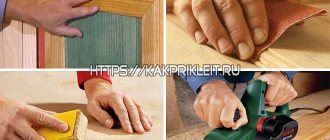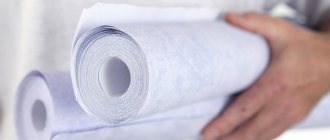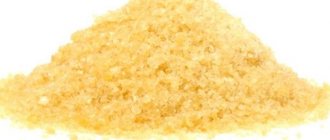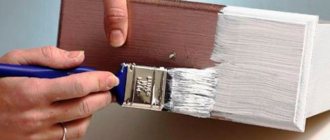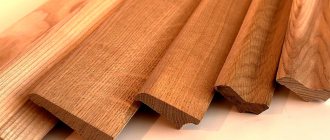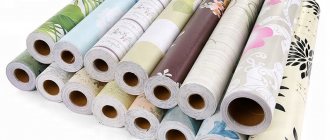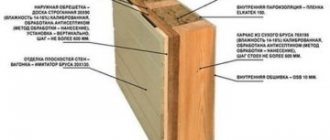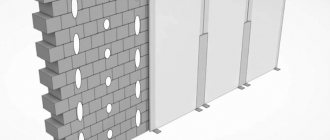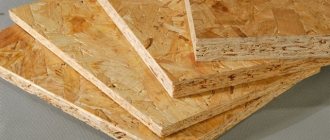Varnishing wood
Even the most perfectly dried, polished wooden product can be exposed to the external environment. And whether it is made from ordinary wood or from the most elite type of wood, without special treatment the wood is not durable. So, in order for your wooden product to acquire a beautiful shade and basic protection from external factors, our article describes how to varnish wood, and also focuses on the subtleties that a home carpenter needs to know.
Wood varnishing:
We are talking about the situation when you have already completely processed your wooden product (sanded, treated with insect repellent, or covered with stain), and all you have to do is coat it with varnish. Varnishing wood is a very simple procedure if you know a few features. For example, you need to consider the grain of the type of wood your piece is made from. For each type of wood there is probably a suitable type of varnish. This is very important to take into account because wood coated with varnish can acquire a new shade (darker or lighter) and even new properties (fire resistance). And the most annoying thing is if, after a painstaking and long selection of colors (for example, when carving wood), you varnish and the colors fade. Try to coat the wood product with an adequate type of wood varnish.
Glossy water-based varnish.
This type of varnish is characterized by rapid drying. The presence of water in it contributes to this, since it evaporates much faster than inorganic substances. It also makes cleaning the tool used to perform the work easier.
The protective functions of the varnish are exactly the same as those of other types of varnish: resistance to friction, shock, exposure to sunlight and moisture on the surface.
This type of varnish has a wide selection of shades, and in addition to floors, it is also suitable for painting wallpaper, primed drywall, plaster and concrete.
How to properly apply varnish to a wooden surface:
It’s not enough to choose a good varnish; you also need to apply it correctly. In order for your wooden product to serve you for a very long time and the varnish not to peel off, it must be applied in several stages and several layers.
The first layer of varnish is very important, it is reinforcing, and is necessary not so much for beauty, but in order to saturate the product. To apply the first layer of varnish to a wooden surface, it must be diluted with a solvent.
Moreover, the solvent must also be suitable for varnish. This is very easy to test empirically: if you have several different solvents and are hesitant to choose one of them, you just need to take a couple of drops of varnish and drop it on a separate surface (any tin can will do).
After this, you need to take a drop of the solvent with which you want to dilute the varnish and add it to a drop of varnish in the same proportion (a drop of varnish + a drop of solvent). If the varnish spreads and mixes well with the solvent, then the solvent is suitable for it, but if the varnish comes in lumps, then the solvent is absolutely not suitable for it.
Solvent application:
When you have decided on a solvent, you can safely dilute the varnish with it in the proportions indicated on the label. Please note that solvent and varnish can irritate the upper respiratory tract, so carry out the procedure for coating wood with varnish in a well-ventilated area and use personal protective equipment.
Apply the first coat of thinned varnish and let it dry thoroughly. The solvent will evaporate and the varnish will be absorbed, but remember that due to the fibrous structure of the wood, the surface of your product will become rough (even if it was perfectly smooth before varnishing). This is normal, as it should be.
You need to take fine-grained “zero” sandpaper (1000 - 1500), it can be purchased in stores that sell spare parts for cars - since this sandpaper is also used when painting cars.
Sanding a varnished surface with sandpaper:
Once you sand the varnished surface of your wood piece with fine-grit sandpaper, it will turn gray. This is also a completely natural phenomenon, you should not worry and think that you have ruined your creation, but it’s time to apply a second layer of varnish.
The second layer of varnish and all subsequent ones (if you think the layer of varnish is not sufficient) must be applied with undiluted varnish. You will see that the “gray hair” created by sandpaper disappears, and the varnish lays down, evenly filling all the gaps (how carefully and efficiently you apply it also plays a role). After you have applied the second layer of varnish to your product, it must be allowed to dry thoroughly (the varnish should not stick and there should be no impressions left in it). The second and all subsequent layers of varnish may take much longer to dry than the first, since the first has been absorbed into the wood fibers and evaporated.
When the second layer of varnish has dried, in principle, the procedure can be considered complete, and for many products this is enough. If you apply subsequent layers of varnish, you simply increase its thickness to the desired size, it all depends on your needs for this.
PS: I tried to clearly show and describe non-tricky tips. I hope that at least something is useful to you. But this is not everything that can be imagined, so go ahead and study the site https://bip-mip.com/
- Reusable plaster moldIf you need to make several identical plaster figurines.
- You can stamp plexiglass even at home without any special material costs.
- Coloring glass There are various ways to color glass. Among their huge variety, the simplest.
- How to paint plexiglass?Plexiglas has long established itself as a multifunctional material for various purposes.
- Simple polishing of wood A rough wooden surface can be made smooth easily and simply by hundreds.
How to properly dilute wood varnish?
Parquet chemicals are a group of products used to protect and decorate wooden floor, wall and ceiling coverings. This includes varnishes and paints, primers and putties, stains and tinting, adhesives, antiseptics, solvents and thinners. Most store-bought wood varnishes are usually liquid, ready-to-apply mixtures. The question arises: is it possible, and how, to dilute the varnish if it is too viscous?
To answer this question, you need to consider several factors. First, we pay attention to the basic composition of the mixture. Secondly, we select the desired solvent. Thirdly, when mixing, we maintain proportions so as not to reduce the quality of the material. Let's take a closer look at how you can dilute thickened varnish and how to do it correctly? And also, what should I use to remove the old protective coating from wood and how should I care for the tool?
Scope of application
Yacht varnish is used in shipbuilding. The compositions are used to process surface and underwater wooden elements of sea or river vessels. Varnishing saves wood from rapid destruction in aggressive conditions. The availability of paintwork materials, developments, and improvements have led to the fact that the original area of use has expanded. Semi-matte, glossy varnishes are now used for processing wooden and metal parts that:
- are subjected to particularly heavy loads;
- constantly live in an aggressive environment;
- are located both indoors and outdoors.
Since the primary function of the treatment agent is protective, it is used in diluted and undiluted form for varnishing:
- indoor items (furniture, interior doors, door frames);
- floor and ceiling coverings (parquet, wooden walls in a bath or sauna, ceiling panels, wooden walls);
- individual items that need decorative and protective design (musical instruments, for example);
- facades of capital buildings.
Dilute, dilute or dissolve
At first glance, there is no difference. Using a special tool, we bring the varnish substance into “working condition”. A solvent is a liquid that dissolves dried varnish, bringing it from a solid to a liquid state. We use a thinner if we need to change (reduce) the viscosity of paints.
Some types of organic eluents perform both roles, but some may be effective in one task and completely useless in another. For example, white spirit can be used to dilute compositions of polyurethane, alkyd and oil groups. But if the varnish has dried, it will not be possible to dissolve it with white spirit.
White spirit can be used to thin some varnishes.
But shellacs, on the contrary, are equally dissolved and diluted with denatured alcohols. But let's not go into such subtle details.
If you need advice on what to thin varnish or what to use for thinning paints, it is better to consult with specialists in this field.
We propose to consider in detail which solvents need to be used in specific cases.
Why apply stain to wood?
To better protect the wood flooring and extend its service life, it is recommended to treat it with stain. This impregnation penetrates deeply into the pores of the wood and enters into a chemical reaction with tannins located in the growth rings, giving the wood a light- and water-resistant color.
In addition, stain protects the wood from borers, mold fungi and other infections and pests. Modern liquid stains come in the following types:
Let us consider their characteristic properties in more detail.
Water stain
This impregnation comes in two types: in the form of ready-made solutions that can be used immediately, and in powder form. A solution should be prepared from it. Water stain does not require drying oil , white spirit and other solvents.
However, it has one significant drawback: when the impregnation penetrates into the wood, it lifts its fibers , leaving the wood unprotected from excess moisture.
But, on the other hand, with the help of such wood processing, its structure is emphasized and highlighted. Therefore, today this type of stain is considered the most common.
Alcohol stain
This impregnation is a solution of aniline dye in ethyl alcohol. It is used for decorative and antiseptic painting of wood products. With the help of alcohol stain, pile lifting is reduced and wood swelling does not occur.
Using this type of stain, it is quite difficult to achieve uniform coloring, because the composition dries very quickly and stains can form . This impregnation is best suited for tinting small products, but it will not be suitable for painting parquet.
Oil stain
This impregnation is a dye dissolved in flax oil. It is the most convenient to work with and can be applied in different ways. Oil stain does not lift fibers and is evenly distributed over the entire wooden surface. Products processed in this way can always be easily repainted and restored .
Polyurethane mixtures
Polyurethane varnishes, paints, primers, adhesives, etc. contain polyurethane - a modern polymer. The totality of its properties surpasses such well-known materials as rubber, plastic, rubber, and metal. To obtain high-strength paint and adhesive solutions, in industrial production it (polyurethane) is mixed with special chemicals.
A lot of polyurethane varnishes are also water-based. This parquet chemistry is environmentally friendly and non-toxic.
If it is necessary to make the substance more liquid, you can use the following as a diluent for polyurethane compounds:
- toluene;
- xylene;
- acetone;
- eluents such as R-4, R-5.
It is not recommended to add alcohols, water, or type 646 eluents.
Acetone is a good thinner for polyurethane varnishes.
Alkyd mixtures
Alkyd compounds have good adhesion, moisture resistance, insensitivity to ultraviolet radiation, and strength. They can be used for external and internal work. Alkyd mixtures contain a main component, organic solvents, driers (for faster drying), and additives. The main component may be:
- pentaphthalic resin;
- glypthal resin with cotton oil;
- a mixture of melamine-formaldehyde and alkyd resins.
To enhance the properties of materials, elements of alkyd resins are often included in multicomponent varnishes, paints, and enamels. The traditional thinner here is white spirit.
Varnish for coating wooden surfaces
Varnishes that are used to coat wood come in several types:
- Alkyd.
- Polyurethane.
- Acrylic.
- Nitrovarnishes.
- Alcohol.
- Oily.
- Parquet with acid hardener.
Alkyd varnishes must be diluted with a solvent . The surface treated with this product is protected from fire and water and does not fade in the sun. Thanks to acrylic varnish, a film is formed that does not allow the wood to wear off and slows down the aging of wood.
Nitrovarnishes, although they dry much faster, however, are not able to withstand the negative effects of ultraviolet radiation and moisture for too long. Polyurethane varnishes are characterized by increased wear resistance and form a durable film on the wooden surface that dries very quickly.
Relatively recently, oil-based varnishes were very popular, but nowadays they are used most often for treating floors. Their main advantage is their low price. Such varnishes must be diluted with drying oil, and they take a very long time to dry. Such a new product as acrylic varnish, which is universal and easy to use .
It is used for both external and internal work. This varnish should be diluted with water, and it does not have a strong odor. With its protective qualities it resembles alkyd varnishes, but is much more economical to use . But alcohol varnishes are used only for the restoration of antique furniture.
Preparing the wooden surface
It is recommended to apply stain and varnish only to smooth and sanded surfaces. Regardless of whether the coating should be painted - new or old, it must be carefully inspected. All detected cracks, seams and knots should be processed and eliminated .
If gaps are also found between the joints and seams, they are sealed with special putty . As soon as it dries, to remove possible unevenness, the putty areas are sanded again using fine sandpaper.
One should take into account the fact that it makes no sense to putty on raw or under-dried wood, much less treat it with stain or varnish it. Such wood begins to deform and the applied layer always becomes unusable.
Bitumen mixtures
Bituminous varnish is a mixture of a special grade of bitumen, various resins and oils. After drying, a durable black film is formed on the surface, moisture-resistant and impervious to chemical attack. It is considered a fairly new material in household use. Belongs to the inexpensive category. It is often used as an anti-corrosion protective layer.
For wooden surfaces it is used when there is no need to emphasize the natural texture of the base (instead of paints). Bituminous material has found application as a decorative coating for the effect of aging surfaces (patina). Another unique feature of bitumen mixtures is cold gluing. The bitumen solution is diluted with white spirit.
To prevent it from thickening during storage, the container must be airtight. The storage location should be dark (without direct sunlight), with moderate temperature and humidity.
Bituminous varnish protects the surface very well from moisture and chemical influences, diluted with white spirit
Water-based acrylic varnish.
to use this type of varnish in rooms that do not experience significant operational load. It is quite suitable for a bedroom, nursery, or recreation room. After the varnish components dry, a transparent protective film is formed on the floor surface, which is capable of rubbing against other objects and is resistant to detergents and water.
Before applying varnish, the floor surface should be treated. It must be thoroughly cleaned of dust and dirt, and also sanded. If the floor has previously been coated with varnish , it must be thoroughly cleaned and sanded until a matte finish appears.
Yacht varnishes
Yacht (or yacht) varnish is one of the most effective means of protecting natural wood surfaces. Already from the name the features of the area where it is used are clear. At the same time, the yacht composition is excellent for woodworking inside and outside of any objects (not just boats, boats, yachts). It is impervious to moisture, temperatures, and aggressive environments.
Yacht varnish. Basic properties:
- high degree of protection of wooden structures;
- physical and mechanical immunity to the influence of external environments;
- durability, extending the life of wood.
To achieve such results, toxic chemical elements (toluene, xylene) are used in the production of the material. There are several production technologies:
- alkyd yacht (based on the organic solvent white spirit);
- urethane-alkyd yacht (the eluent is the same, but in smaller quantities);
- alkyd-urethane yacht (solvent additives are highly volatile);
- acrylates (water-based compounds).
Types of varnishes for wood processing
The most widely used compositions are for varnishing wooden surfaces. Wood varnish prevents the material from rotting when exposed to moisture, protects against mold and mildew and preserves the beautiful wood texture; it can highlight and change the color of the wooden surface. In order for wood varnish to adhere well to the workpiece (panel, furniture, souvenir, floor covering), the working fluid must be given the required viscosity.
The thinner is selected depending on the composition of the film former. There are several types of funds:
- Alkyd. Components: pentaphthalic, glyphthalic, alkyd, melamine-formaldehyde resin in combination with organic solvents and driers. Alkyd varnishes are characterized by good adhesion, moisture resistance, and neutrality to ultraviolet radiation.
- Polyurethane. The main component is a polyurethane polymer combined with special chemicals. They are highly resistant to abrasion, protect wood well from moisture, and form a durable elastic film.
- Bitumen. The composition includes bitumen in combination with resins and oils. Once dissolved and applied to a wooden surface, it leaves a layer of black film. They are used to decorate products using patination technology with the effect of artificial aging.
- Yachting. Yacht paintwork materials show high resistance to contact with moisture and are characterized by a long service life and durability. Yacht varnish is resistant to temperature and aggressive environments. Yacht varnish is used for interior and exterior work.
- Oily. They contain solutions of natural or synthetic resins, modified with vegetable oils with the addition of solvents and driers. After application, they form a durable yellowish film.
- Nitrocellulose. Nitrocellulose substances are based on cellulose nitrate dissolved in organic solvents. Nitrovarnishes dry quickly, protect treated wood well from moisture, and form a uniform varnish film on the surface.
- Petroleum polymers. Resistant to chemicals and detergents. It is obtained by combining petroleum polymer resins with solvents and modifying additives. Wood compositions show high abrasion resistance.
How to remove dried varnish
The above basically lists ways to improve the consistency if the varnish has thickened. What should you do to remove varnish and paint from painting tools? Can synthetic material be removed from wood after application?
It is simply impossible to remove old furniture or parquet varnish from the surface of wood. Typically, scraping or grinding is used where possible. For non-mechanical removal, the type of solvent is selected individually. The basic composition and chemical properties of the varnish are taken into account.
The simplest way to remove an unusable parquet protective coating is to use a special remover. The substance is a chemical mixture. You can use liquid, gel or powder. Acetone copes with the simplest types of paints and varnishes. Denatured alcohol is more suitable for removing shellac.
First, a liquid, gel or powder is applied to the varnish surface. Then you need to wait until the film softens. To speed up the process, it is recommended to cover the treated surface with polyethylene. After some time (from 40 minutes to 4 hours), the old varnish will begin to swell and darken. What to do next?
To remove softened varnish, it is more convenient to use a spatula. You need to work carefully so as not to damage the wooden surface. What to do if the old protective coating is not completely removed the first time? If necessary, the treatment can be repeated.
To remove residual substances from painting tools, use:
- Water-based parquet varnish is washed off freshly with a warm, water-soap solution;
- White spirit, kerosene, turpentine are suitable for most paints and varnishes based on organic solvents. The remaining substances are rinsed well, then the instrument is washed with some household chemical and rinsed thoroughly in water.
When choosing the type of eluent for diluting paint and varnish mixtures, it is important to carefully study the composition, as well as use the manufacturer’s recommendations indicated on the packaging.
Don’t forget about personal protective equipment, especially if you have to work with strong-smelling, quick-drying compounds. Ventilating the room during and after work will protect against poisoning by toxic fumes. These materials should be kept away from children.
Source: kraska.guru
Why remove old varnish?
First of all, let's look at why you need to remove old varnish at all. Of course, in principle, you can apply new paintwork over it, but in this case, some surface imperfections will still be visible. In addition, the new composition must match the old one, otherwise it simply will not work.
Therefore, in order to guarantee a high-quality result, it is better to clean the wooden surface with your own hands, and only then apply a new paint coating to it. In addition, such surface cleaning provides a choice of means to renew the wood texture. For example, before applying a new composition, you can emphasize the wood grain and give it a certain shade with stain.
The photo shows an example of an old cracked varnish coating
However, when starting this procedure, it should be borne in mind that in any case, removing varnish from wood is a rather painstaking procedure. Moreover, it requires caution to prevent damage to the wood. It should also be taken into account that the task is complicated by the volatility of the funds used for these purposes.
Below we will look at how to remove varnish from a wooden surface in compliance with all requirements.
Wood removers
Using washes
The products that are used to remove paintwork are called removers. They can be in the form of liquids, gels, powders, etc. You can purchase them in specialized stores, where they also sell paint and varnish coatings.
Essentially, a remover is the same solvent for wood varnish. However, do not confuse solvents and thinners, despite the fact that these terms are often used interchangeably.
If you are looking for a way to dilute wood varnish, then you should keep in mind that solvents, as a rule, are not suitable for these purposes. However, there are products that can be used both to dissolve dried coating and to thin thickened varnish.
For example, some types of varnishes can be removed with ordinary acetone or denatured alcohol, which is also suitable for diluting them.
But, in any case, before spreading the varnish on wood, you should determine its type, if possible.
Advice! Before thinning wood varnish, you should test the compatibility of the thinner on a small amount of the varnish.
The same applies to solvents for dry varnishes - when choosing what to dissolve varnish on wood, you should take into account the type of paint coating. If this is impossible to do, or the coating is resistant to ordinary solvents, then it can only be cleaned with special removers.
Groups of thinners and solvents
When using chemicals and paints and varnishes, it becomes necessary to prepare a working composition of the required consistency. A varnish thinner is a product that reduces the viscosity and density of a composition. The solvent is used to soften the structure of the dried substance, that is, in cases where it is necessary to remove the coating or clean work equipment.
All solvents and thinners are classified into five main groups:
- Petroleum and aromatic hydrocarbons. Popular distillates are white spirit, kerosene, paraffin, xylene, toluene, and petroleum jelly. Used to dilute oil and polyurethane products.
- Glycol ethers. Can be used as a binding component for water-based stains and paints. Glycol ethers are used to dilute and dissolve nitro varnishes.
- Ketones. Widely used as industrial solvents and paint thinners. A common diluent in the ketone group is acetone, used to dilute polyurethane substances and nitro varnishes.
- Alcohols. Diluents are included as independent components or in combination with esters or ketones. Suitable for alcohol-based compositions, shellac, nitro varnish.
- Ethers. Ethers are used to dilute film formers based on glyphthalic resins. Esters are used to dissolve any compositions with nitrocellulose.
The terms solvent and diluent are often used interchangeably. The difference between them is that some can be diluted with solid, while others can be diluted with liquid film formers. But some products are universal - they both dilute and dissolve compounds.
On video: what is the difference between solvents and thinners.
